Best Weekend Getaways from Seattle

Planning a getaway from Seattle, Washington? What fun! Coastal towns, island retreats to mountain adventures make the Seattle area a local's dream when it comes to getting away from the city and recharging. After a whirlwind city week, here are my favorite weekend spots just a short drive or ferry ride away to spend 48 hours exploring, relaxing and reconnecting... I hope you enjoy them too.
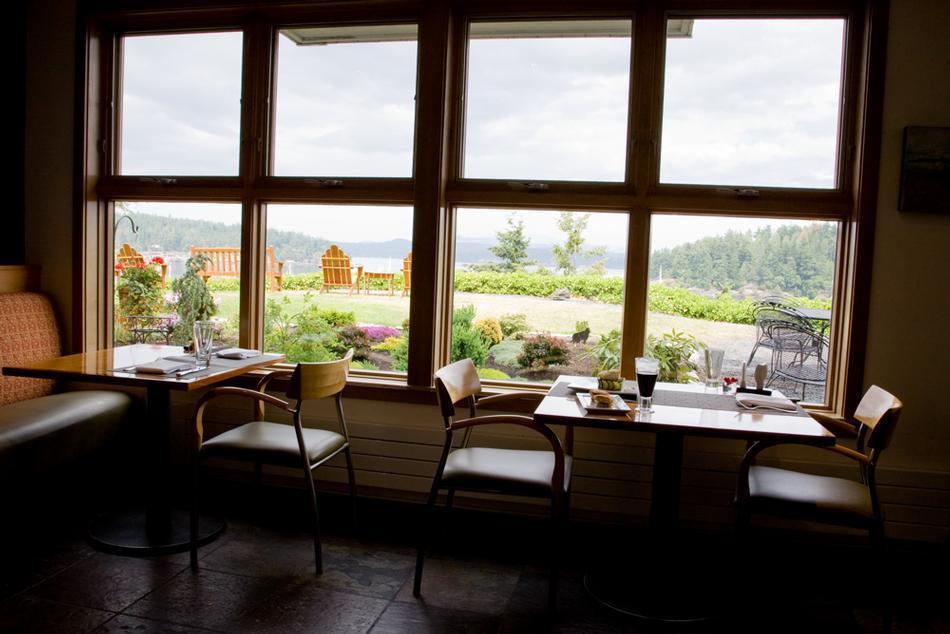
1. Friday Harbor House - 3 hours from Seattle
We absolutely love Friday Harbor House, and have been many times. I think that this hotel is perfect for a long weekend getaway to the islands and it's one of the most relaxing coastal escapes I’ve found in Washington. Why? First off, you can't beat the views of the San Juan Channel here. In addition, you'll find great food and a walkable location in a small town.
The drive from Seattle to Anacortes took just under two hours. In Anacortes, you'll board the ferry which took us to Friday Harbor.
My room for two days was stylish and had large windows looking out over the water which was my absolute favorite part and why I can't wait to return! Also fabulous was our spa-inspired bathroom with a soaking bath tub, modern art, a knit throw, and artisan bath products that smelled amazing! There was also a flat-screen TV and in-room coffee with beans from a local roaster.
Friday Harbor House's location in the heart of Friday Harbor put us just steps away from independent boutiques, galleries, coffee shops, and whale-watching tours departing from the marina. We enjoyed both San Juan Island Roasters and Riptide Cafe with awesome harbor views - such a perfect spot to spend 30 minutes getting my caffeine fix.
- Location Map
- To book, check availability or prices for Friday Harbor House.
What I loved best:
One of my favorite highlights was the onsite restaurant, which celebrated Pacific Northwest cuisine with a farm-and-sea-to-table focus.
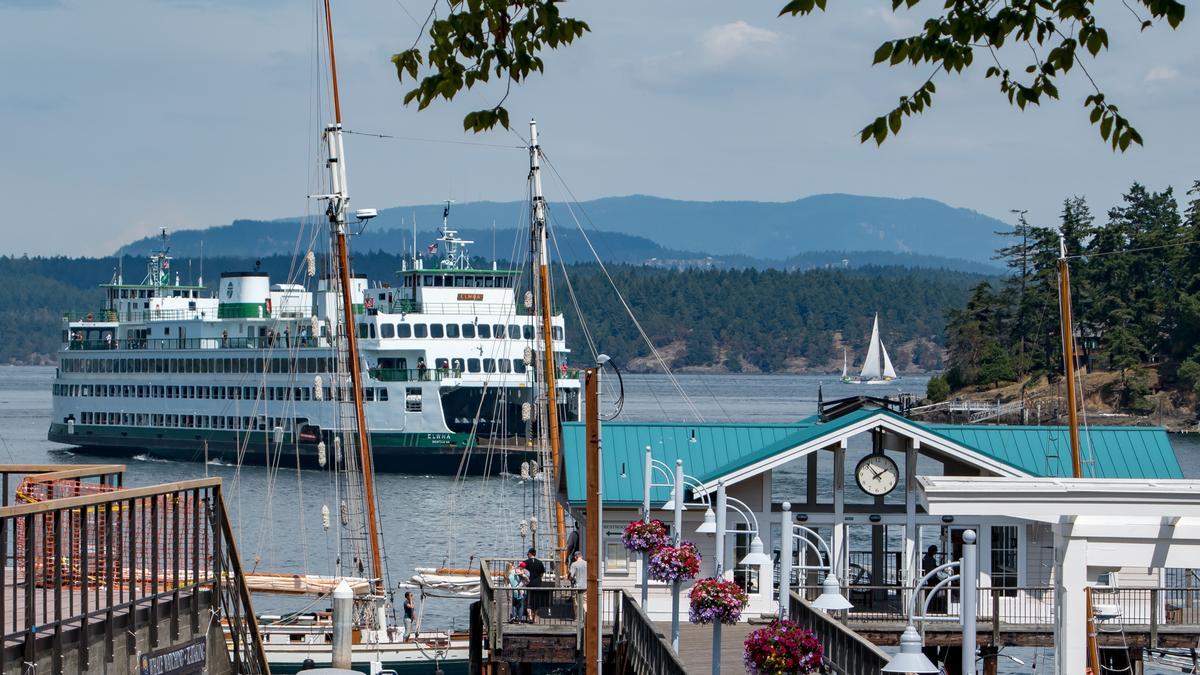
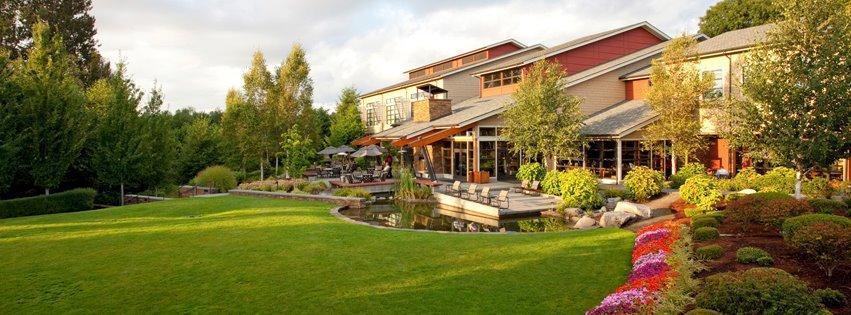
2. Cedarbrook Lodge - just 20 minutes from Seattle
This is one of my favorite quiet luxury escapes in the Pacific Northwest, and honestly, it feels like one of the most underrated nature stays in the Seattle area.
I love that it's the kind of place where I can enjoy a 60-minute massage at The Spa at Cedarbrook in the morning, hike up forested paths in the afternoon, and end my day sipping wine by a crackling fireplace in the evening.
I stayed in an airy, beautifully designed room for two nights, which featured plush bedding, oversized windows, complimentary WiFi, a spacious bathroom, and serene views of the lodge’s landscaped wetlands. I thought the overall design struck a perfect balance between modern lodge style and calming natural serenity.
I loved that each floor had snack-filled "living rooms" stocked with complimentary treats like malt balls, yogurt, ice cream, and fresh fruit, a small but incredibly thoughtful touch that made the stay feel even more special.
The lodge is located just minutes from Seattle-Tacoma International Airport, so it's perfect if you land there like we did. Despite being so close to the city, I felt completely removed from the noise and bustle, and surrounded instead by trees, ponds and gardens at this tranquil 18-acre natural sanctuary.
- Location Map
- To book, check availability or prices for 4-star Cedarbrook Lodge.
What I loved best:
The impressive range of onsite amenities was my personal highligh: a well-equipped fitness studio (I get over jet lag faster if I do a quick workout), complimentary bike rentals, cozy fireside lounges. In addition, dining at award-winning Copperleaf Restaurant & Bar was super tasty with totally local ingredients.
A downside? We just miseed one of the seasonal culinary events hosted here - something I put on my bucket list for our next trip.

3. Willows Lodge - 30 minutes from Seattle
In the heart of Woodinville wine country, this is one of my favorite weekend getaways in Washington state that's such as conveniently short drive from Seattle!
I thought that my room for two days was dream come true and just what we needed after another hectic workweek. I soaked in the oversized soaking tub built for two, watched the crackling fireplace at the foot of our bed, and even used the plush seating area to read for an hour.
I also treated myself to a 60-minute lavender-infused massage at the full-service spa on our first day! After that, we checked out the gardens, warmed up in the outdoor hydrotherapy pool, and by then were ravenous for farm-to-table dishes at the award-winning Barking Frog restaurant (you really need to book ahead of time on weekends!).
- Location Map
- To book, check availability or prices for 4-star Willows Lodge.
What I loved best:
My absolute favorite highlight was the private balcony overlooking beautiful lodge gardens and riverside trails.
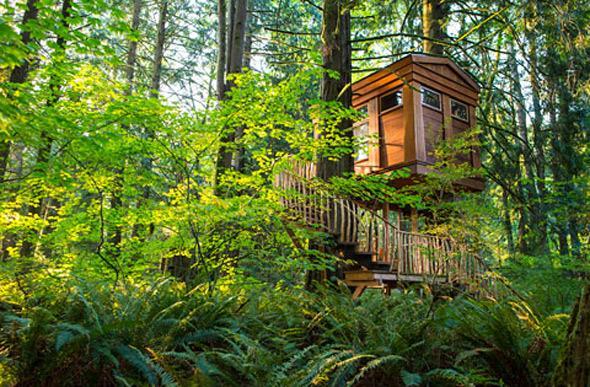
4. TreeHouse Point - 35 minutes from Seattle
For a truly unique weekend, this place stands out as one of the most enchanting places near Seattle. We stumbled upon this hideaway, tucked away in a lush forest with a river just 30 minutes from downtown Seattle about 10 years ago and have been back a few times since because we simply adore it here!
Our treehouse for two days was located high above the forest floor and connected via winding pathways and rope bridges. It felt both whimsical and serene, like stepping into a woodland fairytale. (Unfortunately if you are afraid of heights, I don't think you would be comfortable here.)
Breakfast was a highlight, with hearty homemade dishes like farm-fresh eggs, flaky pastries, and seasonal fruit served in a cozy communal lodge. In the evenings, I enjoyed sipping local Washington wines by the firepit, and listening to the sounds of the forest.
I loved that there were so many activities to choose from: guided nature walks, yoga sessions on the lawn, and plenty of quiet corners to read, journal, and unwind.
- Location Map
- To book, check availability or prices for TreeHouse Point.
What I loved best:
I loved waking up to the sight of sunlight streaming through the trees while still snug under warm quilts in my private treehouse. It was equal parts magical and grounding, a truly unforgettable weekend escape.
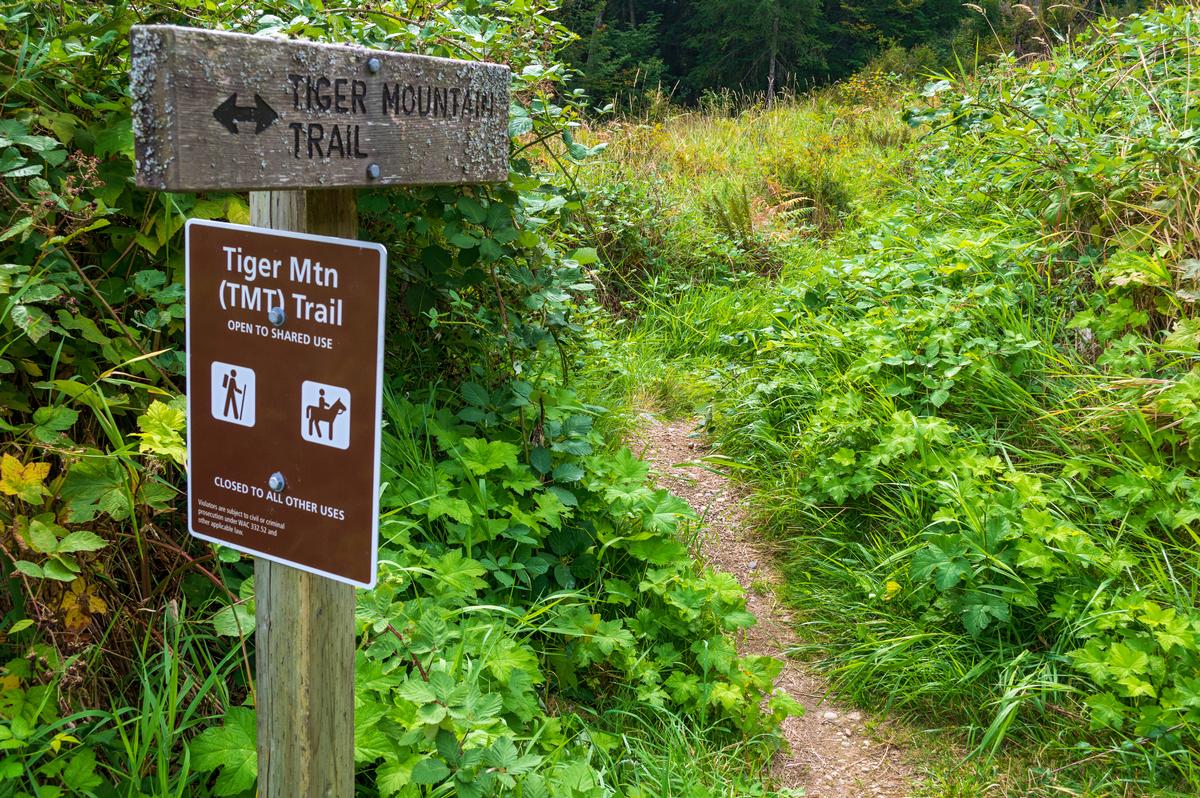
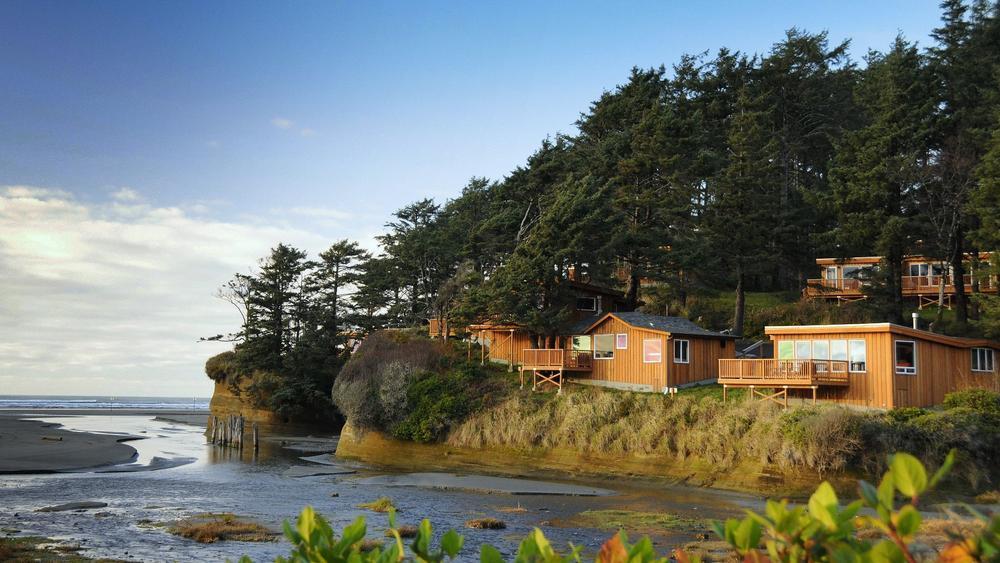
5. Iron Springs Resort - 2 hours 30 minutes from Seattle
I was completely won over by this timeless, early 20th-century Pacific Northwest lodge with a classic wooden facade and stone detailing. Inside, the lobby was warm and inviting, with a soaring vaulted ceiling, rustic timber beams, a grand stone fireplace, and cozy nooks filled with local art, handmade quilts, and shelves of books.
We stayed in a spacious ocean-view cabin with a private deck for two days, where we had a fully equipped kitchen, a wood-burning stove, plush linens, and heard soothing sound of waves just outside my window. The resort even provided thoughtful extras like board games, rain jackets, and beachcombing kits.
The resort is tucked along the Washington coast, right on the shores of the Pacific, surrounded by tide pools, driftwood-strewn beaches, and evergreen forests. Just a short drive away, we found hiking trails, fishing spots, and small coastal towns.
The onsite Iron Springs General Store served fresh pastries, espresso, regional wines, and local craft goods. The resort also hosted community bonfires on the beach, guided tide pool walks, and seasonal seafood feasts.
To book, check availability or prices for Iron Springs Resort .
What I loved best:
I loved the sense of community — pets were welcome (I met a few friendly dogs on the beach walks!), and evenings often ended with people gathering around a fire pit to share stories under the stars.

6. Salish Lodge & Spa - 35 minutes from Seattle
I found it impossible not to fall for this incredible hotel, perched dramatically above the roaring Snoqualmie Falls!
Our Spa Level King Room for two care-free days was a true sanctuary and I loved its private fireplace, oversized soaking tub, and eco-luxury bath products. The floor-to-ceiling windows gave me breathtaking views of the surrounding evergreens and the amazing waterfalls. I kept thinking that it felt like stepping into a Pacific Northwest dream, like a Netflix romance come to life. For me, the turndown honey cookies (a nod to the lodge’s own honeybees) were an especially sweet touch!
On our first morning, I pampered myself with a 60-minute sugar scrub treatment at their world-class spa, and especially appreciated that they use locally sourced oils.
There were hiking trails right near Salish Lodge so you can be active on vacation too. In addition, I found it impressive that Salish Lodge & Spa won the #1 Resort Hotel in the West by Travel + Leisure award in 2024!
- Location Map
- To book, check availability or prices for Salish Lodge
What I loved best:
The Dining Room was my favorite place where we savored regional Pacific Northwest cuisine, including fresh salmon and other farm-to-table dishes.
A downside? Having to book spa treatments weeks in advance.

7. Campbell’s Resort on Lake Chelan - 3 hours from Seattle
I think this is one of the best lakeside weekend getaways you can take from Seattle. The most amazing part for me are the views, both of the lake and of the mountains, especially in the spring. I found it fascinating that the historic property dates back to 1901 and is also family-owned.
My guest room for two days was cozy with warm wood accents, a fireplace, but the best part was a private balcony where I could watch the sunrise over the lake with a coffee in the morning.
The resort’s location in downtown Chelan meant I was within walking distance of shops, Rocky Pond Winery Tasting Room, the Chelan Museum, Chelan Evening Farmers Market (May through October), and even the lakeside trails! I loved leaving our car parked over the weekend and getting around on foot.
We ate at the resort itself because both the food and the view were great at Campbell’s Pub & Veranda. For relaxation, I got a 30-minute pedicure and then spent an hour relaxing at their full-service spa.
- Location Map
- To book, check availability or prices for Campbell’s Resort on Lake Chelan.
What I loved best:
For me, Campbell’s Resort is one of the best weekend getaways from Seattle because it's peaceful and unique!
On our summer trip, the outdoor seating gave us the most amazing views of the lake which was my personal highlight!
Booking Checklist
1. Book Your Flight - I use Expedia because I like their mobile app with my itinerary. They've helped me re-book flights on many occasions. Once you reach their Gold tier, support is especially good.
2. Book Your Hotel - I use Booking.com or Expedia, depending on my destination.
3. Book Your Rental Car - I use Expedia.
4. Book your tours on Viator or Get Your Guide.
5. If you are planning to visit more than three national parks in the next 12 months, buy the America the Beautiful Pass.
